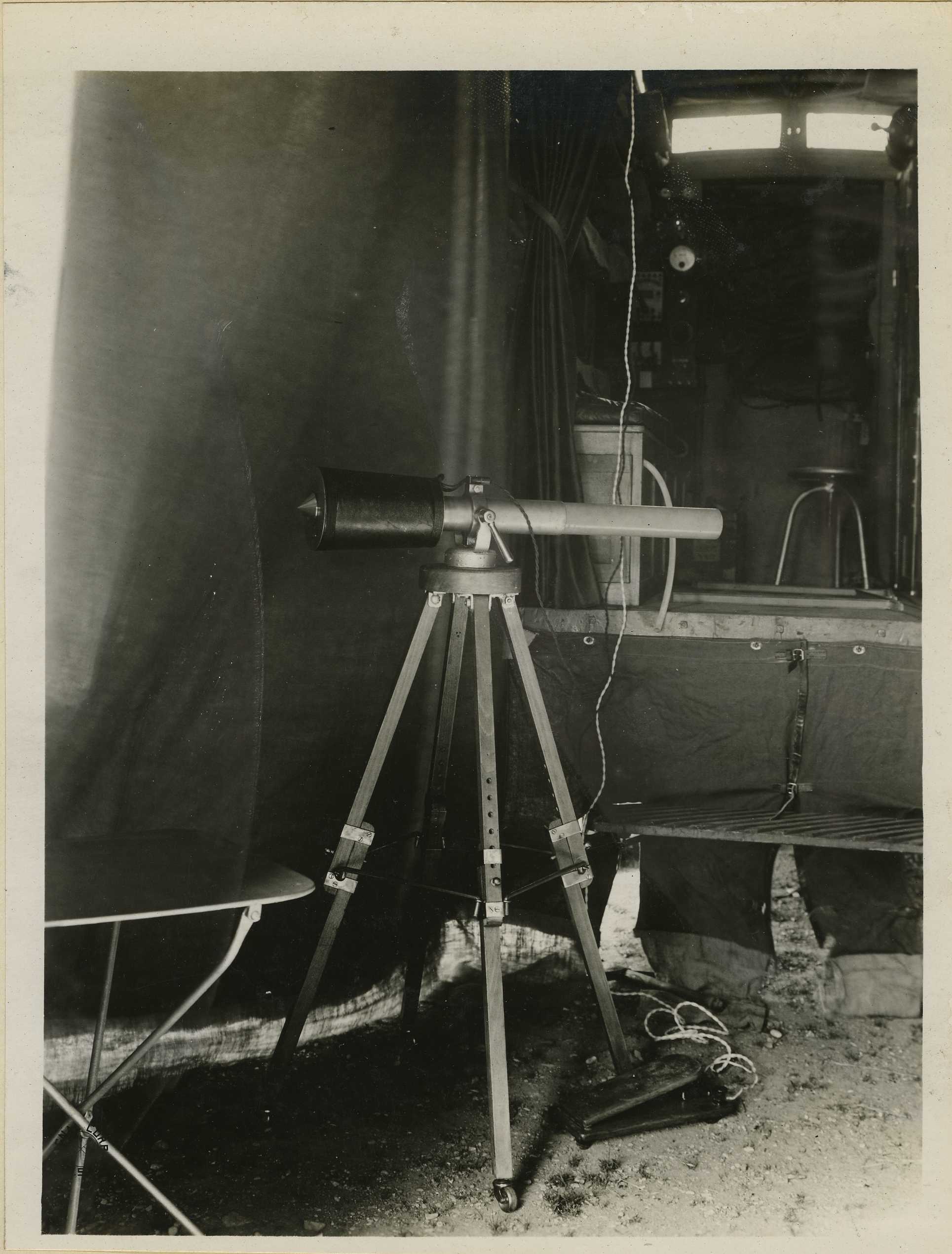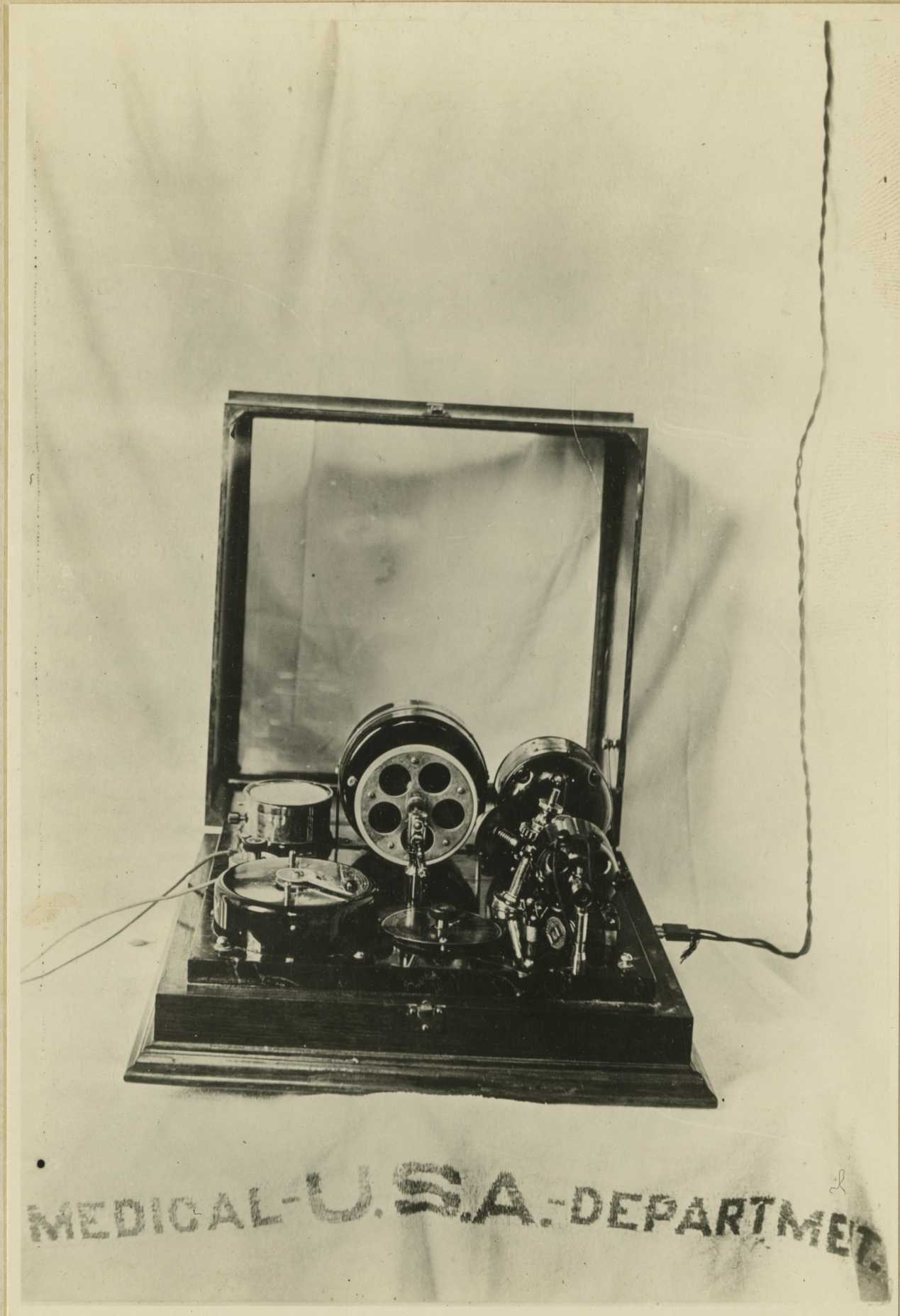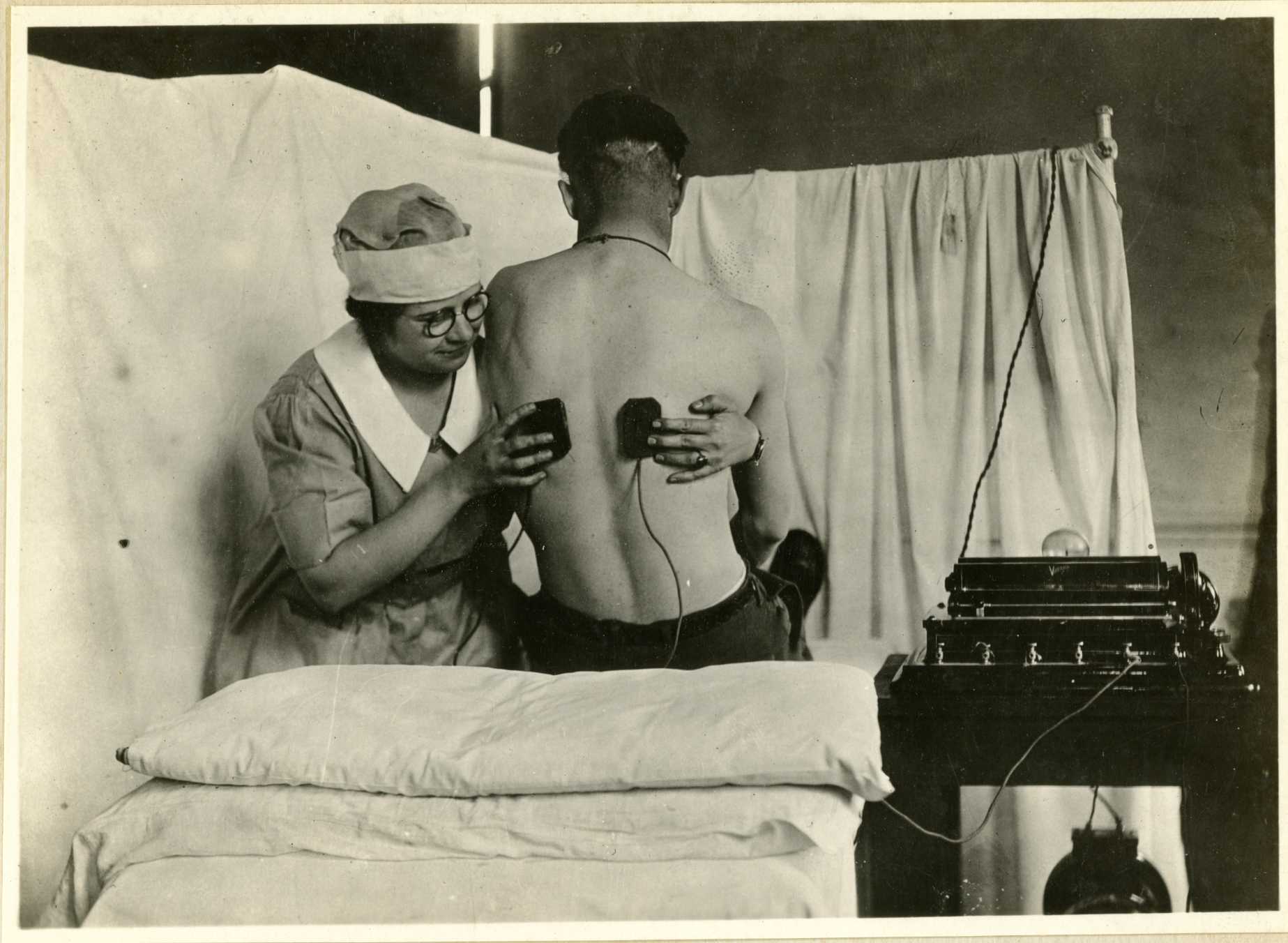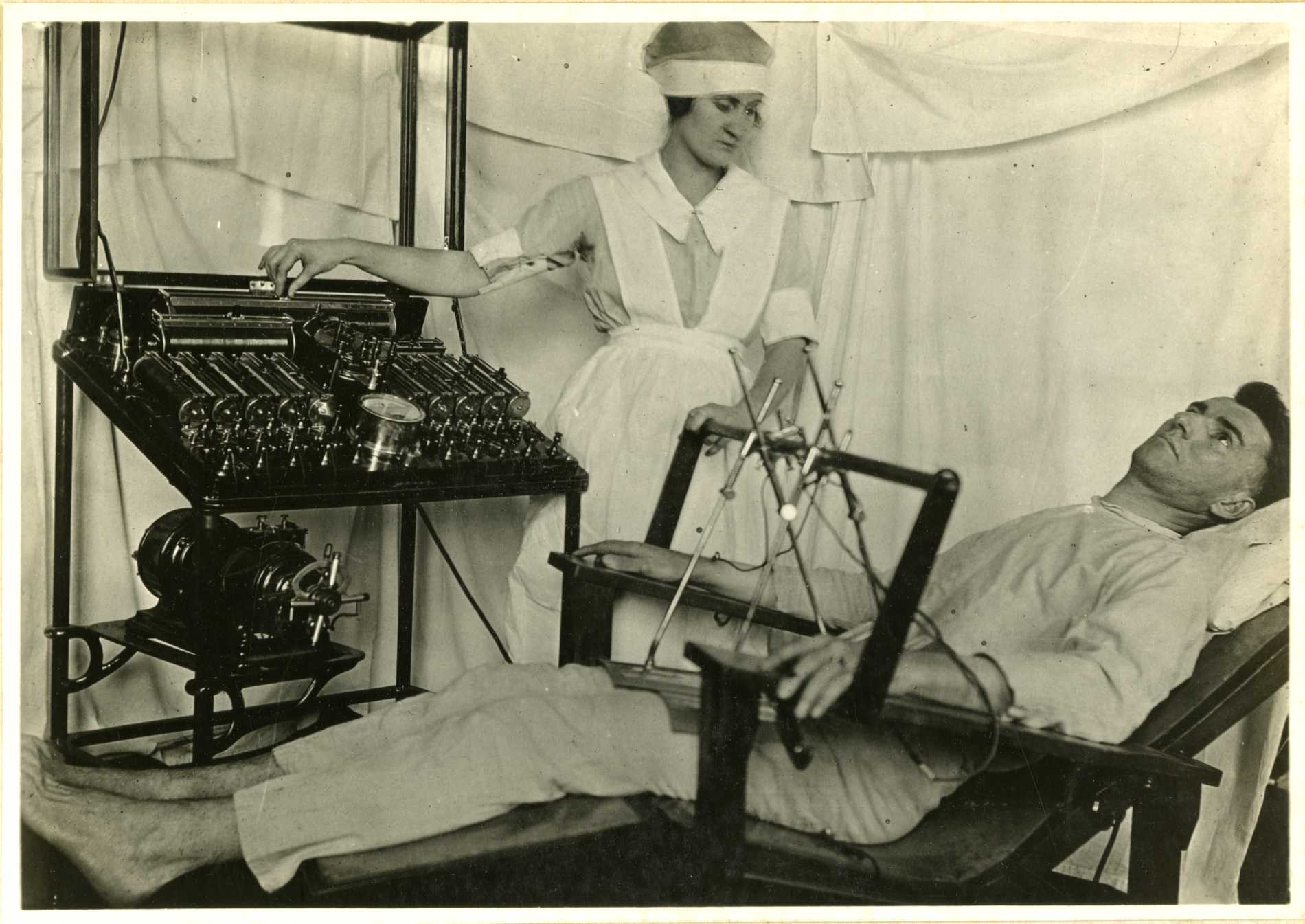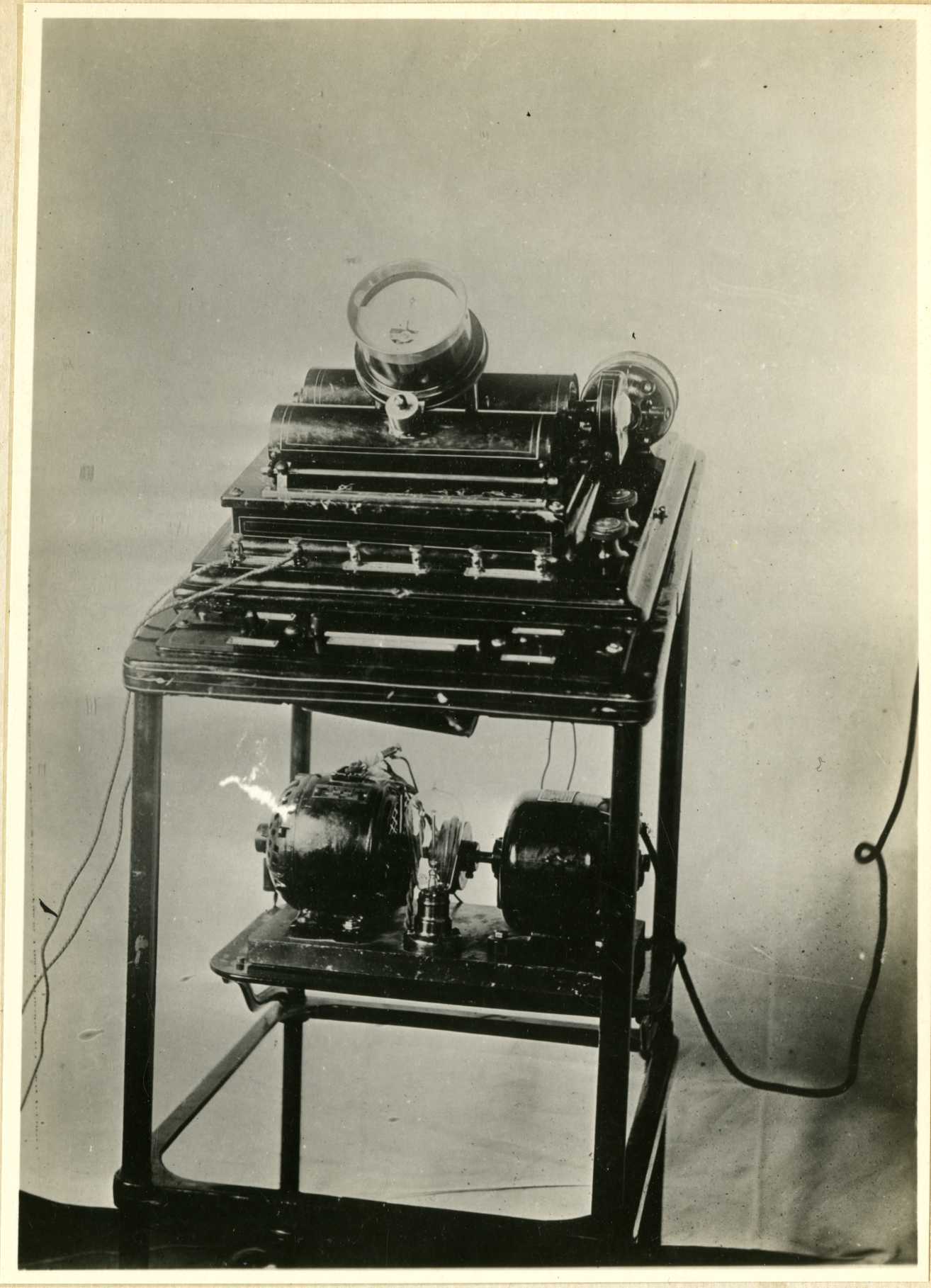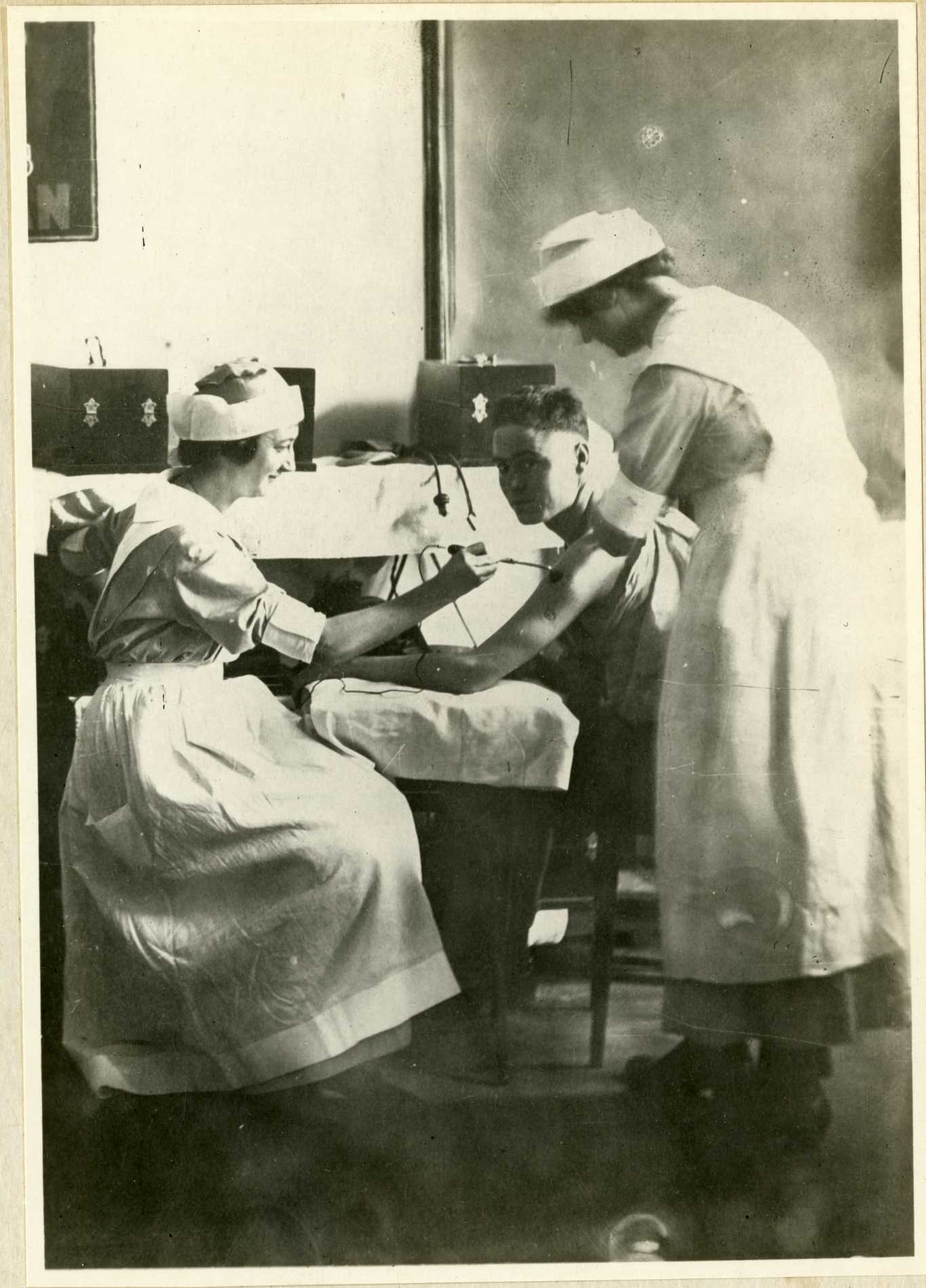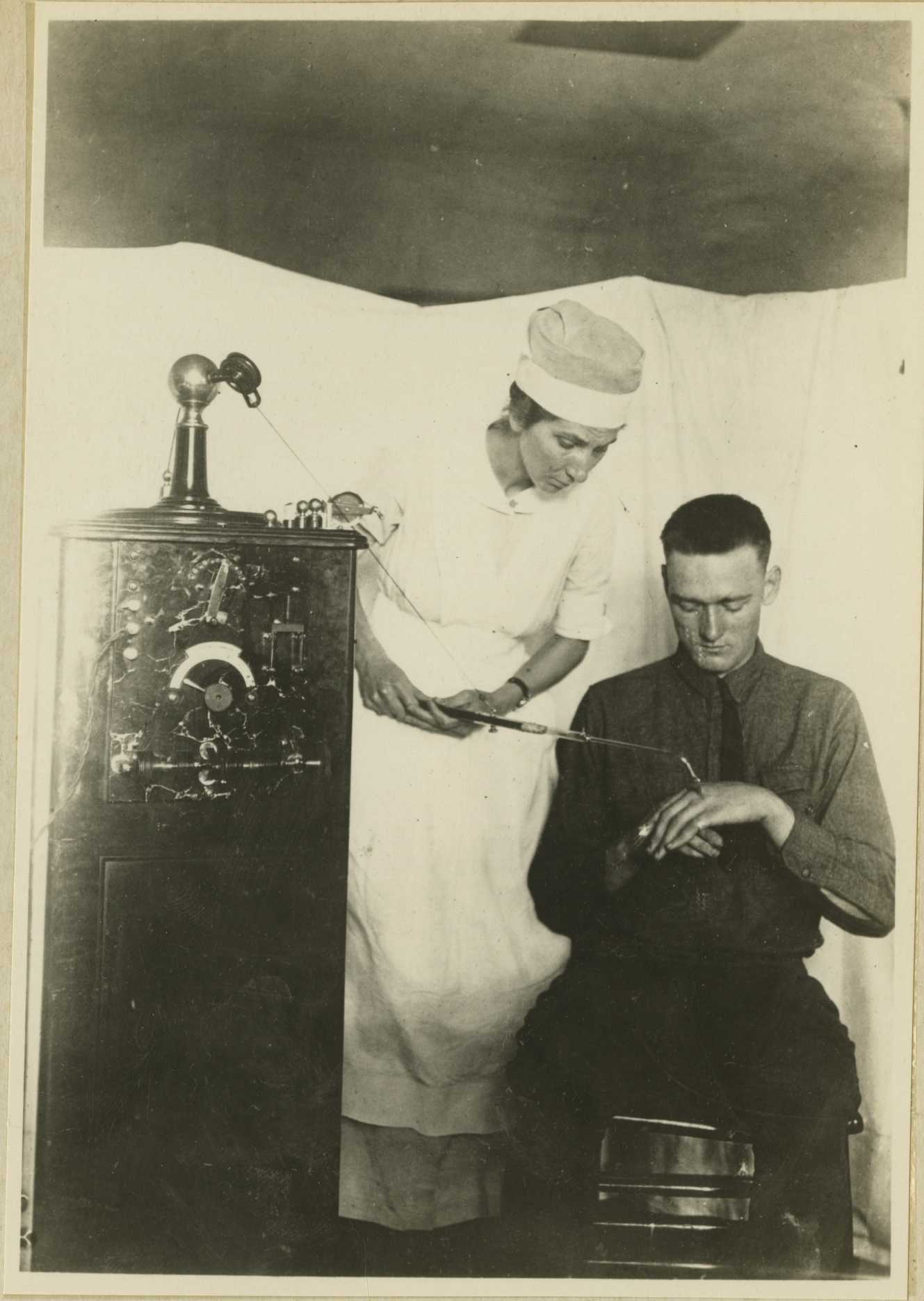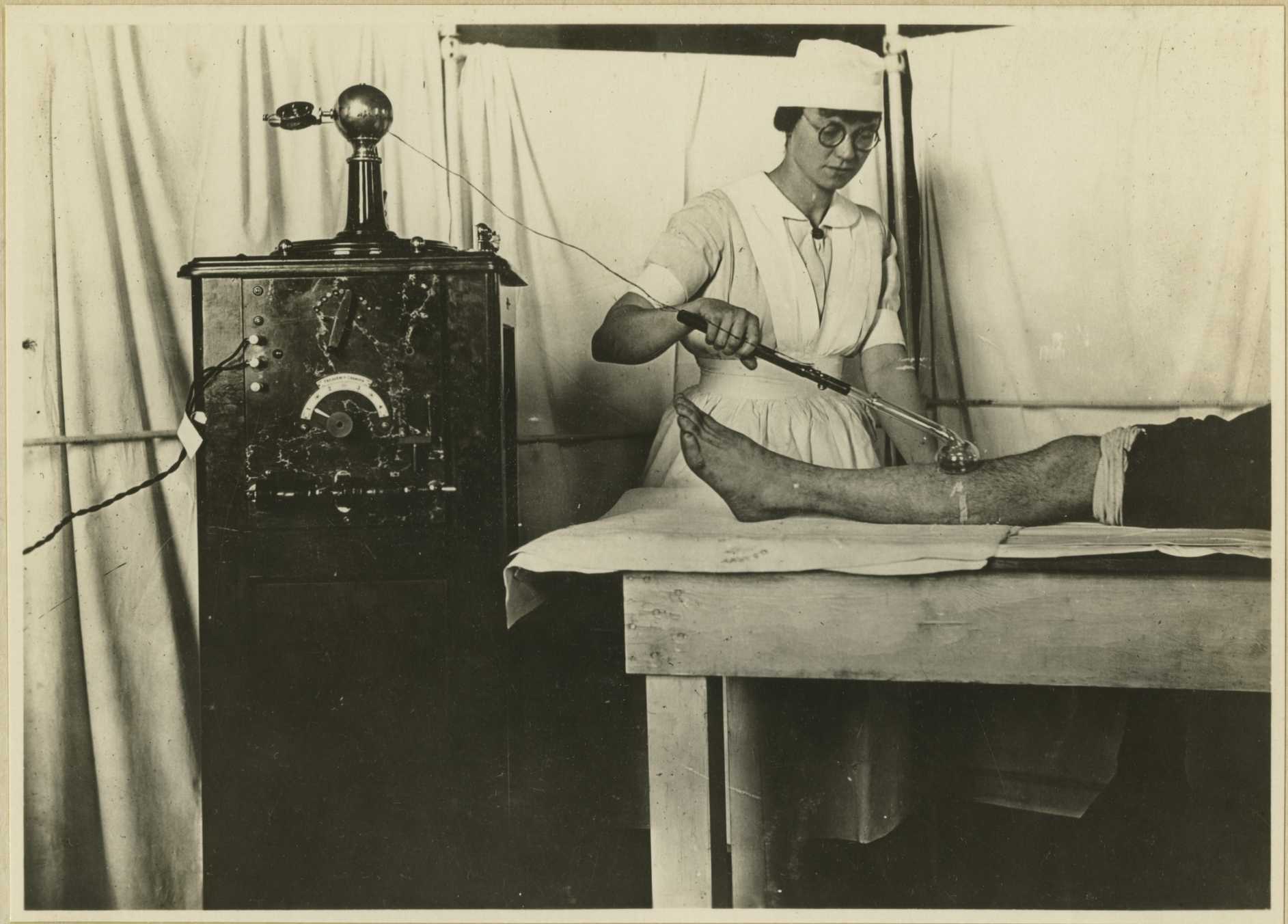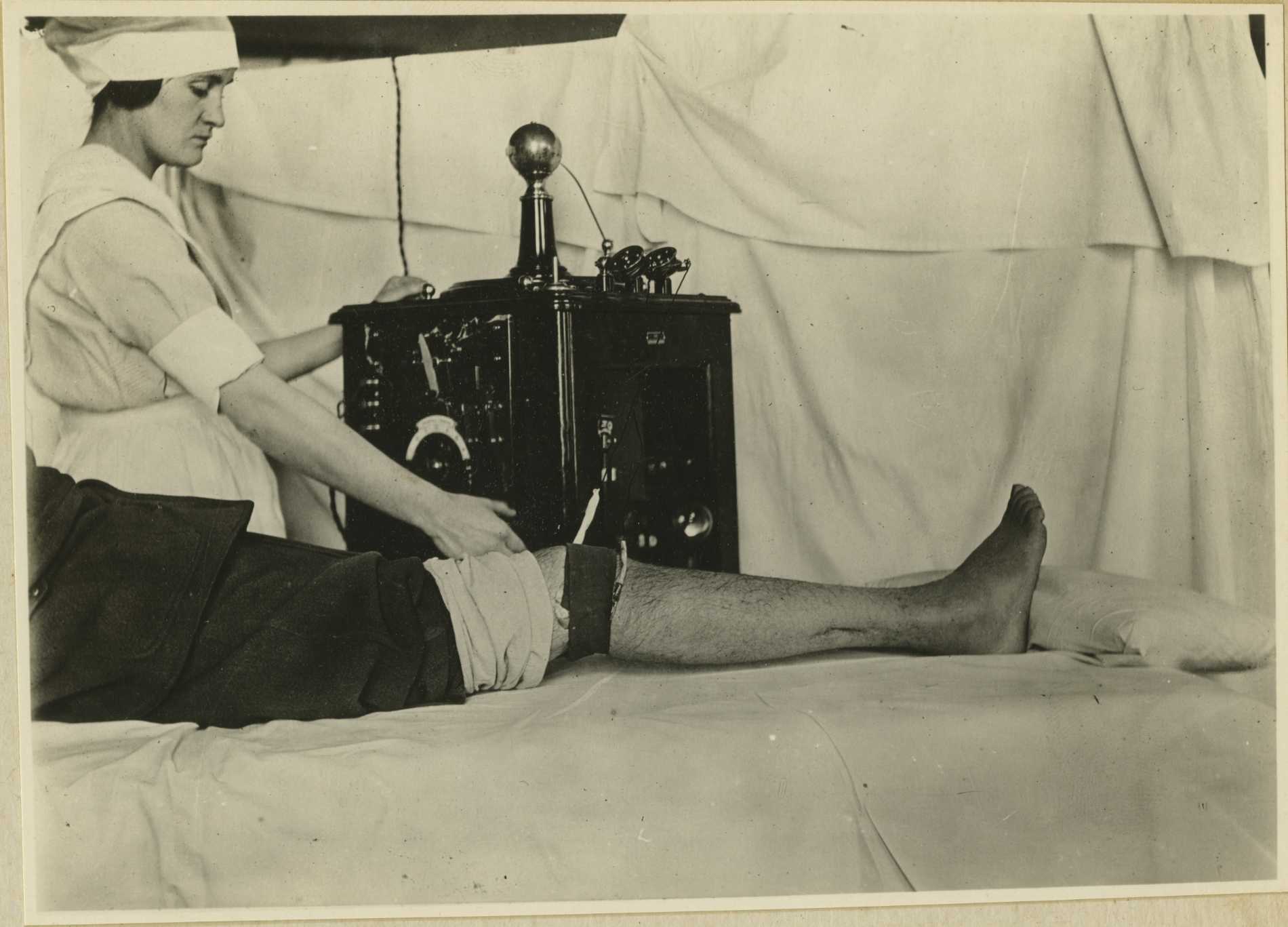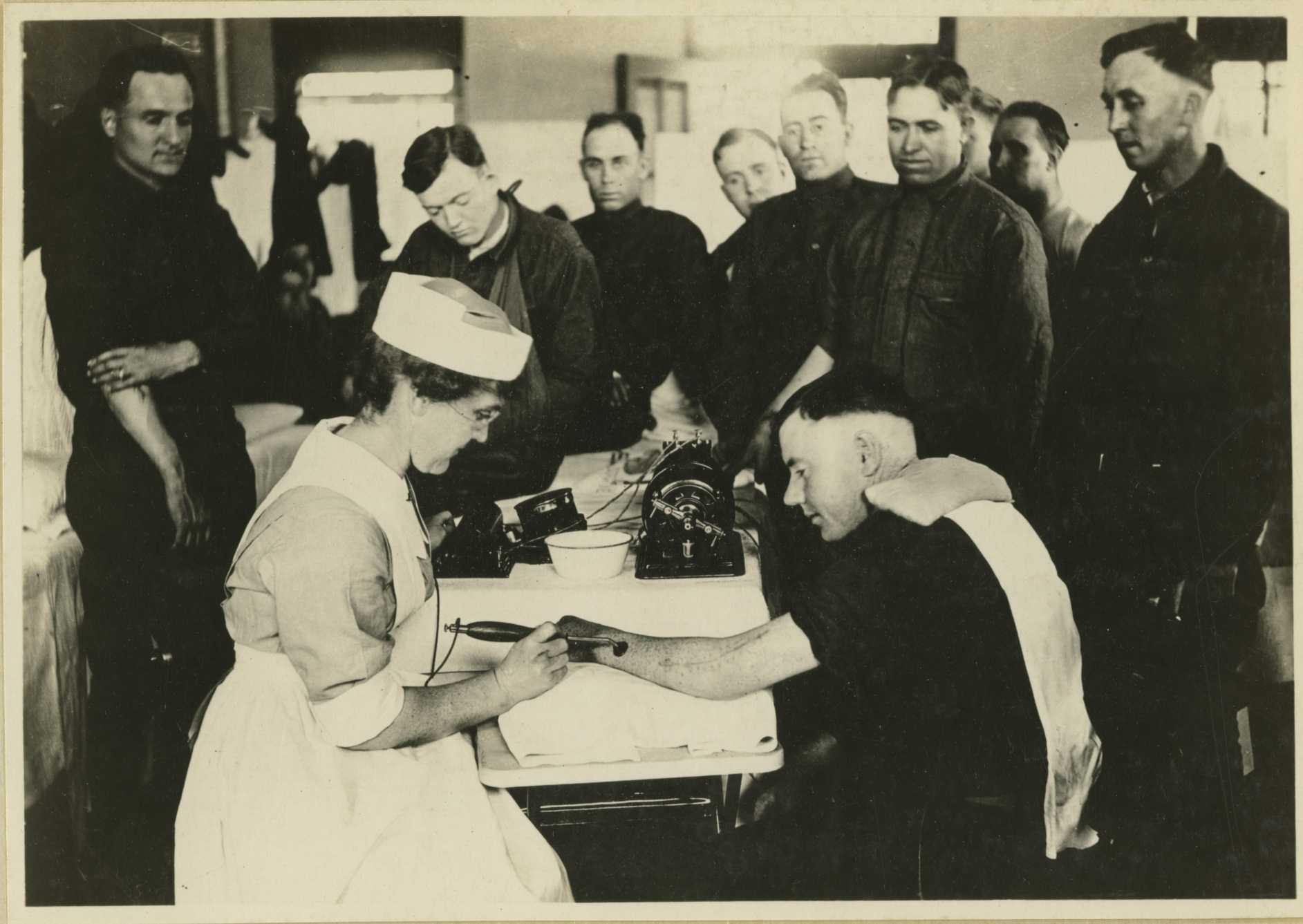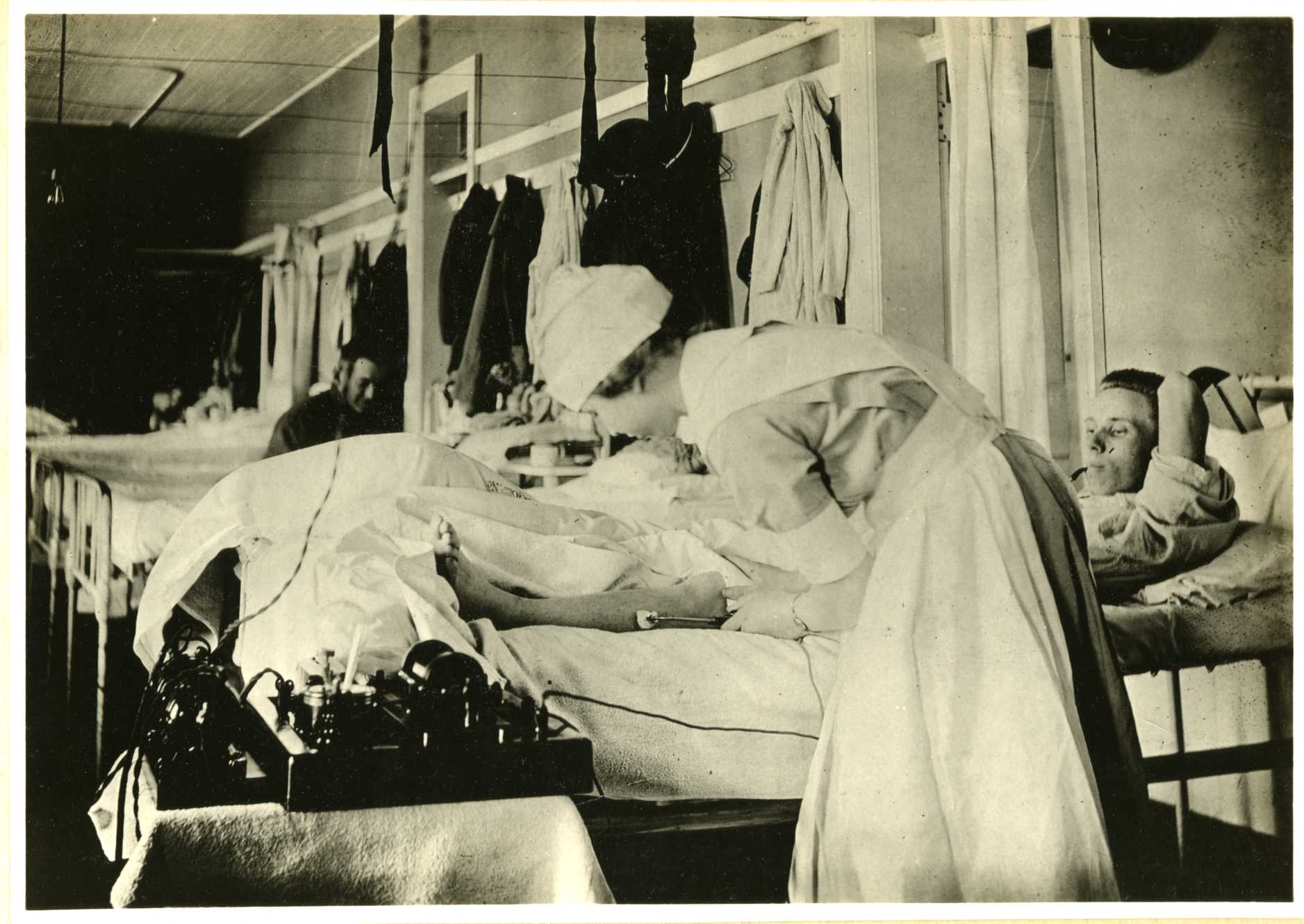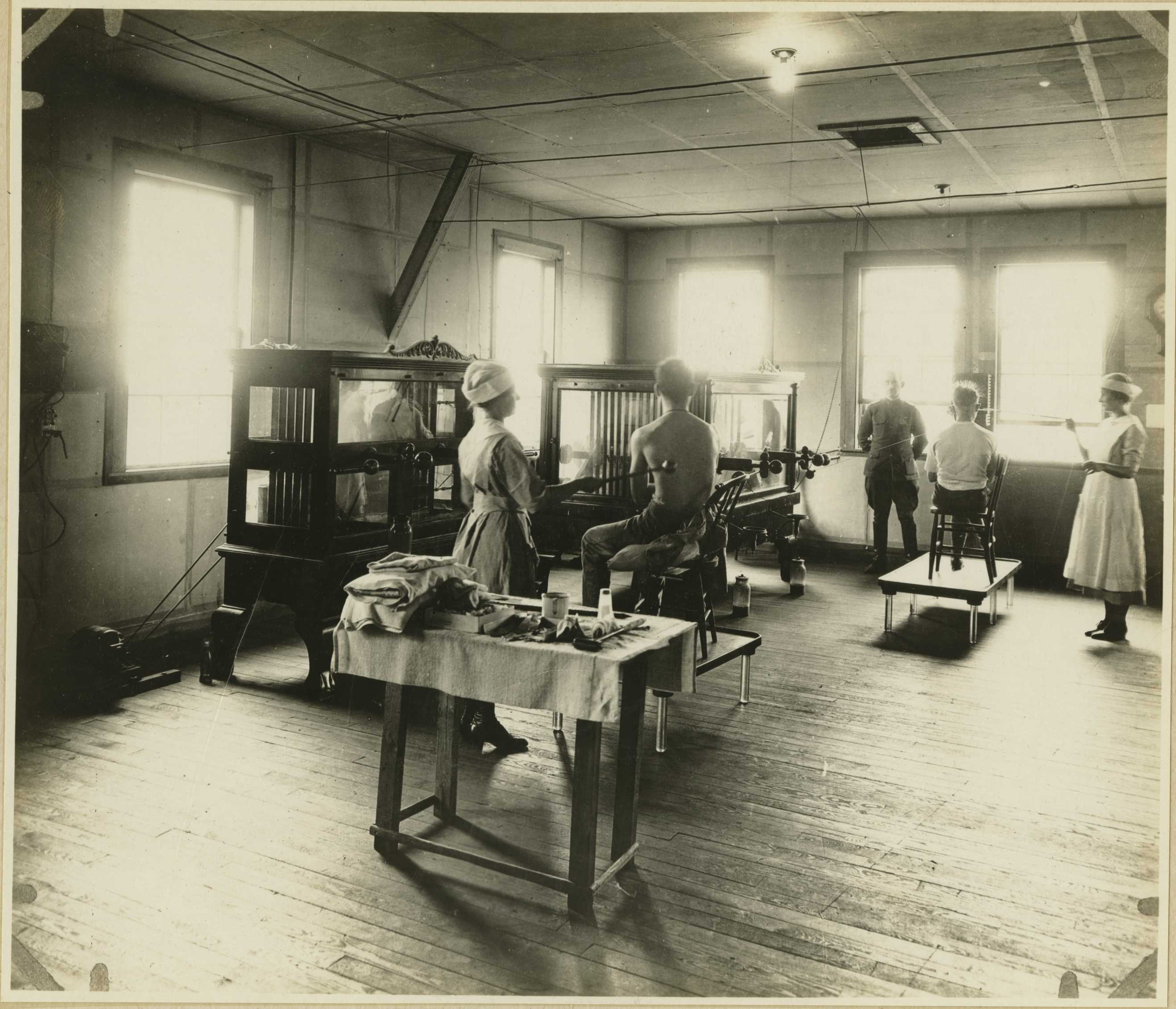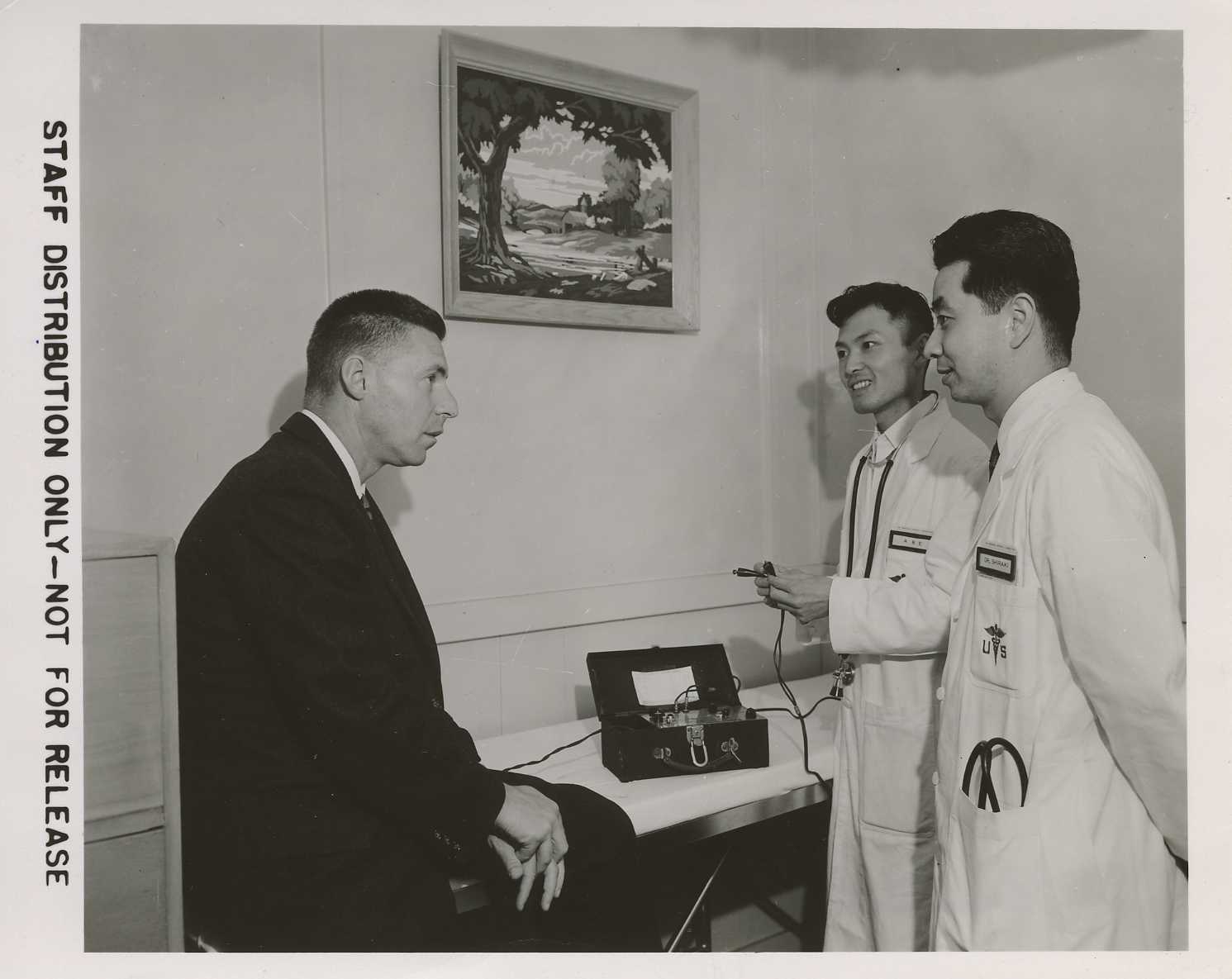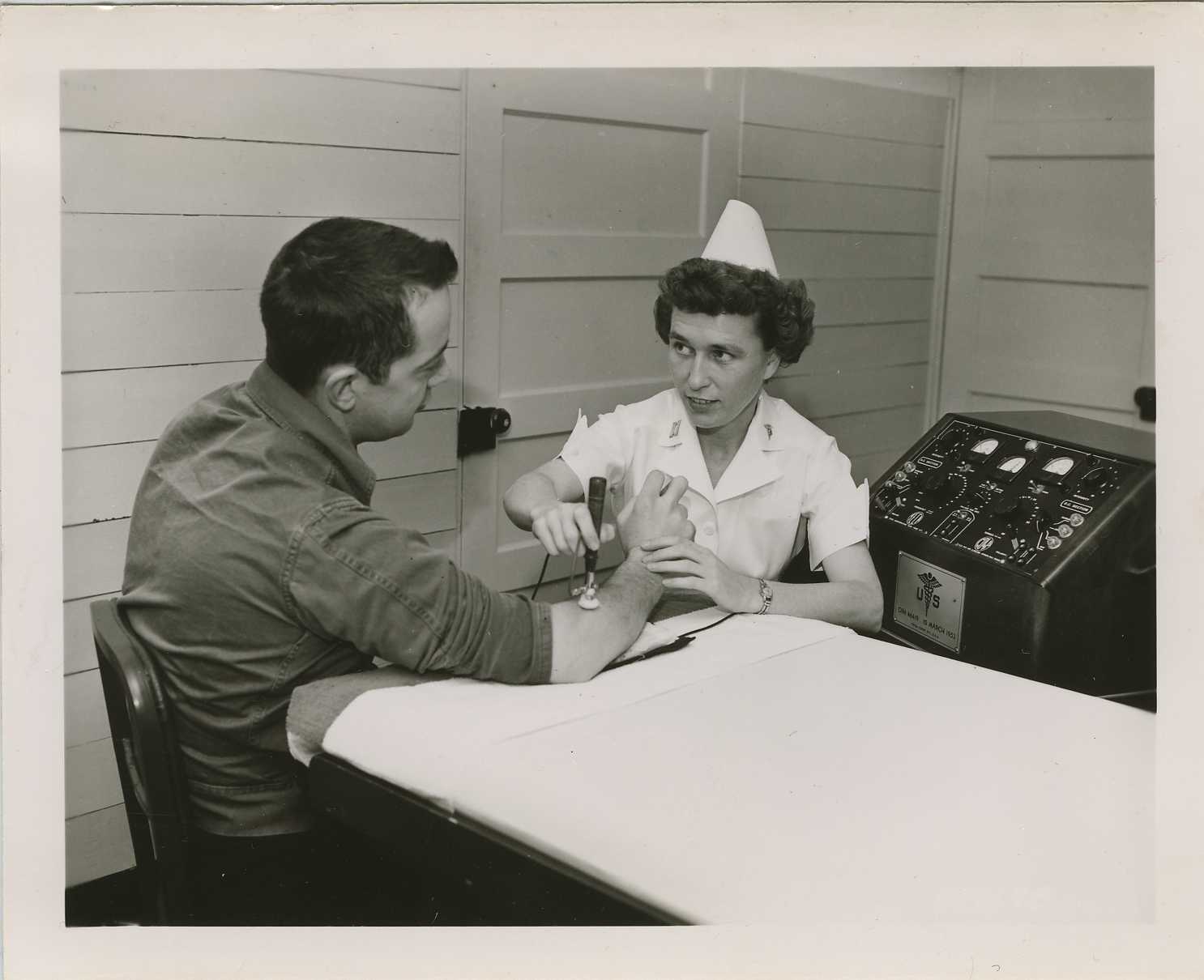|
The Turn Of The Century Electrotherapy
Museum http://www.electrotherapymuseum.com 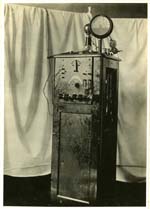 Otis Historical Archives From The National Museum Of Health And Medicine Endless thanks to Kathleen for providing us with these magnificent photos: we feel they should be shown in the highest resolution possible! 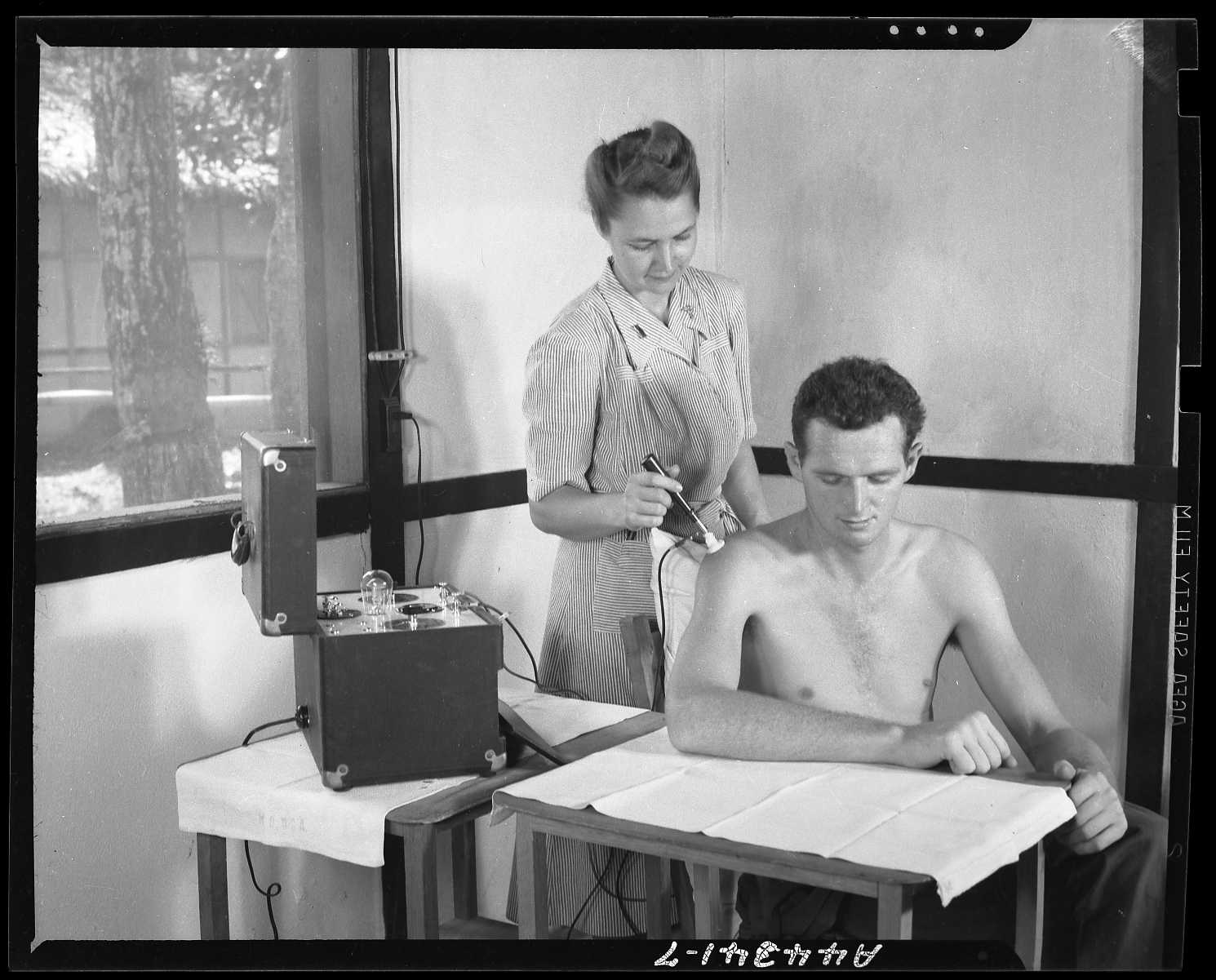 A44-347-1 Physical therapy activities at the 20th General Hospital. Patient seated at a table with a woman applying an electrical [?] instrument to his shoulder. World War 2. 1st Medical Detachment. Museum and Medical Arts Services (MAMAS)
Reeve 15686 Special surgical ambulance. 05/29/1918. Paris, France. Electric magnet used to remove pieces of metal from the eyes. Special surgical ambulance designed by Lt. Julian [Julien?] A. Gehrung, B. SC; AB; AM; MD; FACS for use by the Red Cross of Allied Armies at the front for treatment of gas poisoning, eye, ear, nose and throat. 71 rue de la Grand Armee, Paris.
Reeve 41478 Types of electrical apparatus. McIntosh polysine apparatus for galvanic and sinusoidal electricity.
Reeve 41477 Use of electrical apparatus. Slow sinusoidal electricity. Applying electrodes at root of splanchnic nerves in splanchnoptosis with resultant cerebral anaemia [anemia?] found in shell shock.
Reeve 41476 Use of electrical apparatus. Bergonic chair for giving general electric treatment for psychological effect, in psycho-neurotic [psychoneurotic?] cases. WW1 Victor galvanic and sinusoidal mounted apparatus with motor generator. Types of electrical apparatus. REEVE 41480 Use of electrical apparatus. Interrupted galvanism used in regeneration of deltoid muscle. [World War 1] REEVE 41481 Fulguration. Use of electrical apparatus [World War 1]
High frequency vacuum tube for peripheral stimulation. Use of electrical apparatus. [World War 1] REEVE 41483 Use of electrical apparatus. Diathermy for fibrous ankylosis of knee, to be followed immediately by massage and manipulation. [World War 1] REEVE 41488 Use of electrical apparatus. [World War 1] REEVE 41469 Physical reconstruction. Electrical treatment in wards. [World War 1] Reeve 41523 Physical reconstruction. Static treatment. Patient on left - Spinal arthritis, receiving sparks. Patient on right - catarrhal deafness, receiving effleuve. (effleuve 6 in. long can be seen plainly.) SIGNAL CORPS 548321 Dr. Norman O. Brill, Consultant in Psychiatry to the Office Of Surgeon General, Department of the Army, and Consultant in Psychiatry, Department of Psychiatry, School of Medicine, University of California (left), discusses the use of electric shock in the treatments of psychiatric disorders with Doctors Kazauhiko Abe and Masanor Shirake, rotating interns at the US Army Medical Center. Japan. 10/06/1958. Photo by SP4 [Specialist 4th Class] Allen L. Bird. Photo Branch. USA Sig Comm Agency, Japan.
SIGNAL CORPS Captain Phyllis Strobel (Arlington, Minn), Physical Therapist, massages the muscle in the arm of patient Pvt Charles Morrison (New Richmond, Wis), in the Physical Therapy Ward, Building C14, US Army Hospital, Fort Chaffee. The machine is called an electrical stimulator and can vary the amount of current that flows into the nerve muscles of a personís body. Through this action it causes the paralyzed muscles to move, preventing them from shriveling up until the patient can move them for himself. Fort Chaffe, Ark. 02/05/1957
|
